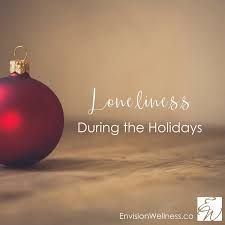How To Prevent Bedsores
How to Prevent Bed Sores?
If you are caring for anyone with limited or no mobility, being able to identify, treat, and knowing how to prevent bedsores is incredibly important.
Bedsores, also know as pressure ulcers/ sores, can progress into life-threatening infections very quickly and as a caregiver, we know how important it is for you and your loved one to avoid these at all costs.
When helping caregivers find an assisted living facility for their loved ones, some of them are on the verge of being bedridden or already are. One of the hardest things to witness when caring for a loved one who is immobile is the pain they have when it comes to bedsores.
In order to address the question, we want to help you in identifying them, knowing the different stages, the risk of developing them, and the steps you can take to prevent them from appearing.
What are bedsores?
Bedsores are also known as pressure sores or pressure ulcers, they are open wounds on the body where skin and tissue are breaking down because of prolonged pressure from bones.
Someone who spends most of their time lying or sitting in the same position has bones placing pressure on internal tissues. This cuts off blood circulation and leads to tissue damage and skin breakdown.
Common areas for a bed sore to appear:
- Shoulder blades
- Tailbone
- Hips
- Elbows
- Heels
What causes bedsores?
- Lack of movement – Any lack of movement over a long period of time, usually caused by a debilitating illness can cause a breakdown of the skin and bedsores.
- Old age – Elderly people have thinner, less elastic skin. The loss in skin strength in older adults who spend a lot of time sitting or lying down makes them more prone to bedsores.
- Inadequate nutrition – Many older adults have poor nutrition and lack of vital vitamins and minerals in their diet. This can escalate the problem of skin breakdown. Without proper nutrition, tissue cannot repair itself.
- Being underweight – Older folks often due to the poor nutrition mentioned above are underweight. The less fat and padding there is on the body, the more the bones protrude, and the easier it is to develop bedsores.
- Incontinence – Urine and feces from incontinence can make the tail bone and even hip areas more susceptible to skin breakdown. Bacteria can get into these areas and cause serious infection.
The 4 Bed Sores Stages you need to know about

Stage I – Redness and discoloration of the skin at a bony pressure point is the first warning sign that a bedsore is developing.
Stage II – If not treated, it will continue to worsen and the skin breaks open and an ulcer forms. The area will feel tender and can be painful.
Stage III – A stage III bed sore forms a deep crater through skin and layers of tissue to the subcutaneous fat underneath. The less blood flow the area gets, the more tissue that decays and infection can set in.
Stage IV – The most serious of bedsores will progress so far that the ulcerous crater goes all the way down through the soft tissue to show bone.
If a bedsore gets to this stage the patient is at extremely high risk for infection and this is a life-threatening condition.
Common signs of developing bed sores:
- Unusual changes in skin color or texture
- Swelling
- Pus-like draining
- Skin that feels cooler or warmer to the touch than other areas
- Tender areas
If you suspect bedsore or pressure ulcers, seek medical attention quickly.
A bedsore can develop and worsen significantly within just a few days.
Contact the professional Senior Advocates at Assisted Living Made Simple for information on a variety of senior topics.
5 Ways to prevent bedsores
- Reposition yourself regularly to avoid stress on the same area of the skin.
- Keep your skin clean and dry.
- Eat well and drink plenty of water.
- Manage your stress.
- Try to exercise daily.
Contact the professional Senior Advocates at Assisted Living Made Simple for information on a variety of senior topics.
Disclaimer: All content provided on this blog is for informational purposes only about senior living topics. The information provided on this blog is accurate and true to the best of our knowledge but there may be errors, omissions, or mistakes.
Preventing Pressure Ulcers
Dr. Madhuri Reddy, from the Harvard-affiliated Hebrew Rehabilitation Center in Boston, wrote a wonderful letter on https://www.health.harvard.edu/newsletter_article/Preventing_bedsores and I thought it very informative and worth sharing. This can help PREVENT pressure ulcers before they can begin to form.
Support surfaces. Support surfaces include mattresses and added padding that goes over them. There are several types of “dynamic” surfaces that mechanically change the pressure under the patient. Some work by alternating the air pressure in the mattress.
Expensive ($30,000 per bed) air-fluidized mattresses contain silicone-coated beads that liquefy when air is pumped through them. Almost all intensive-care unit beds are now equipped with dynamic surfaces. To the layperson, they don’t look any different, but you may hear a motor switching on and off.
Repositioning. Many bed sores prevention protocols recommend moving an immobile patient every two hours. The thinking is that if the patient can’t shift position, then the nursing staff should do it for him or her.
The few clinical trials that have examined repositioning don’t provide clear guidance on how often it should be done. Even so, Dr. Reddy believes that repositioning is probably one of the most effective means of pressure ulcer prevention: “We just need to find out which positions, and how often, is most effective.”
Nutrition. Some experts believe increasing a patient’s protein intake is the key to healing bed sores. Five nutrition studies were included in Dr. Reddy’s analysis. Only one found a nutritional supplement to be beneficial, but it was also the largest and best-designed study.
Skincare. Dry skin is a known risk factor for bedsores, probably because it creates friction. Three studies examined specific topical agents, but none evaluated a simple moisturizer.
So, what do we do? Dr. Reddy suggests the following:
- If a loved one is in the hospital, and she can be moved safely, make sure she is repositioned often, even in the emergency room. Ask for pillows to help her lie in various positions. Keep the patient’s heels off the bed or stretcher, using pillows under the calf muscles. You want to minimize any pressure on the skin.
- Keep an eye out for early-stage bedsores. Heels and the area around the buttocks are the “hot spots.” The skin will be red. Normally when you press on skin, it turns white. If a bedsore is forming, it will stay red. The skin may also feel warm and hard.
- If you think you see a developing pressure ulcer, point it out to a nurse or doctor. Ask that a wound specialist be consulted.
- Even if there’s no evidence of bedsores, make sure that preventive measures are being taken. Ask questions. Nursing-home administrators at long term care facilities are aware of the problem, partly because some homes have been sued for providing inadequate bedsore care.
- Keep the skin moist because of friction and shear cause bedsores, not just pressure. Any inexpensive, odorless moisturizer should help.
- Specialized foam and sheepskin overlays that go on top of the mattress are better than a mattress alone. Regular sheepskin is too thin; it should be Australian sheepskin or something equivalent.
- The jury is still out on which nutrients, if any, might speed healing, but malnourishment is a common problem for older patients, with or without bedsores. Make sure your loved one is eating enough.



